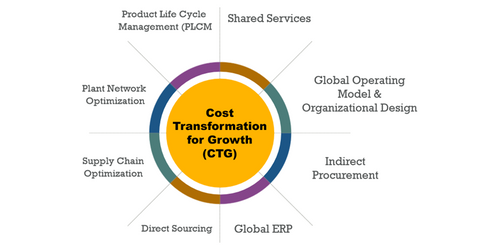Exploring the Nuances of Stryker’s Cost Transformation for Growth
Cost transformation growth is one of Stryker’s key strategies for driving growth. The company has come a long way from its decentralized structure prior to 2010.
Nov. 21 2016, Updated 11:04 a.m. ET

Cost transformation for growth
Cost transformation for growth (or CTG) is one of Stryker’s key strategies for driving growth. The company has come a long way from its decentralized structure prior to 2010 to its current organized, centralized business structure with substantial quality improvements, improved efficiencies, and optimized cost structures.
Along the way, the company has consistently made strong investments in innovation and strategic acquisitions to enhance and expand its product portfolio. The company is therefore positioned well for cost transformations for growth in the years ahead.
What’s CTG?
CTG is focused on long-term growth and isn’t the cost-cutting restructuring program being executed by some of Stryker’s peers, including Abbott Laboratories (ABT), Zimmer Biomet Holdings (ZBH), and Thermo Fisher Scientific (TMO). Stryker plans to focus on optimizing its structural costs by removing costs that don’t add value for customers, thus driving its leveraged growth. These measures will help the company to reinvest its cost savings in research and development initiatives, strategic acquisitions, and other growth investments.
Moreover, these measures will drive margin expansion. The company expects to deliver 30 to 50 basis points of operating margin expansion over the next five years. Its cumulative five-year margins are expected to have an impact of 190 to 250 basis points. Stryker plans to execute its strategy through the programs listed in the chart above, which have been under execution by the company over for the last several years.
Investors can invest in iShares S&P 500 Growth ETF (IVW) to gain exposure to Stryker. IVW holds ~0.22% of its total holdings in SYK.
